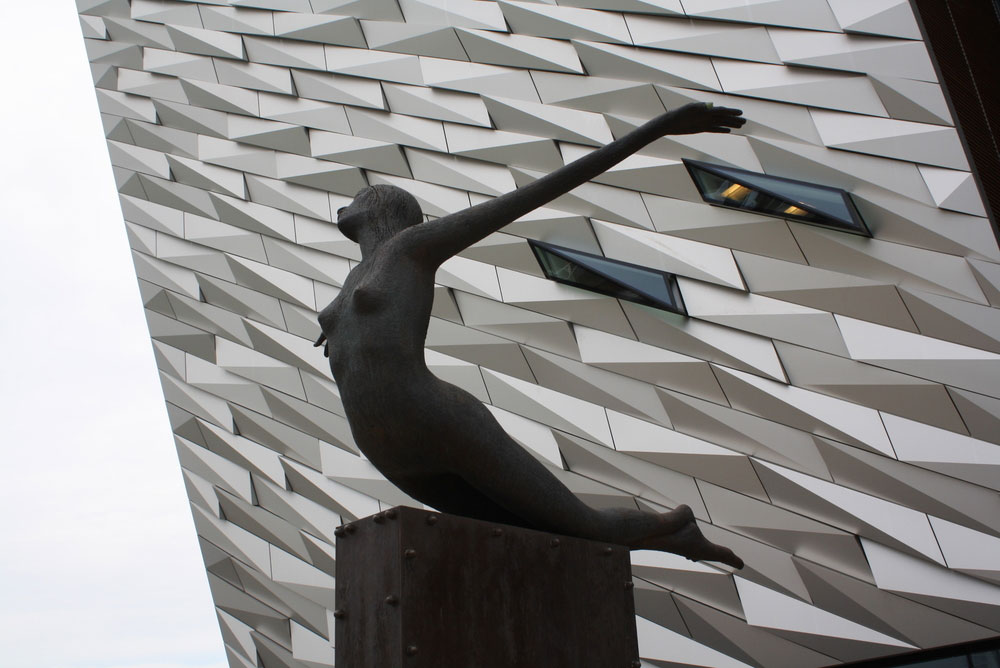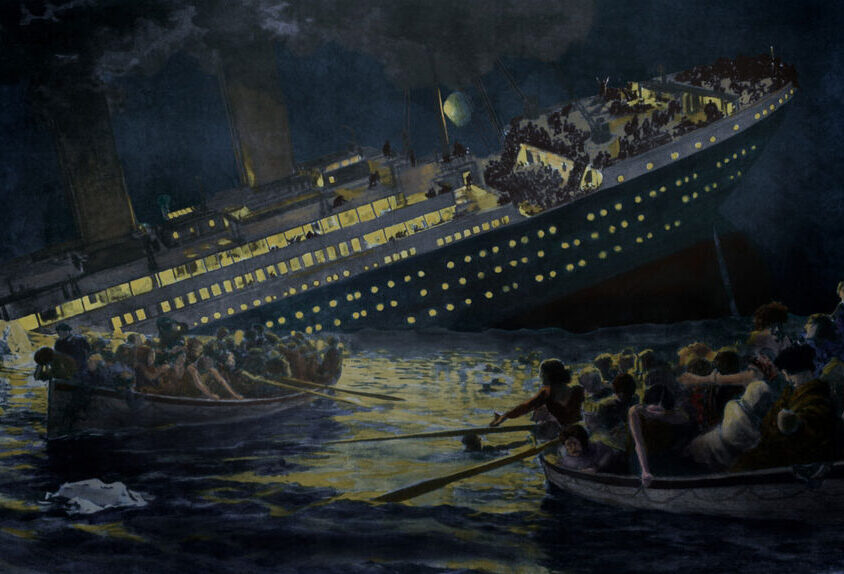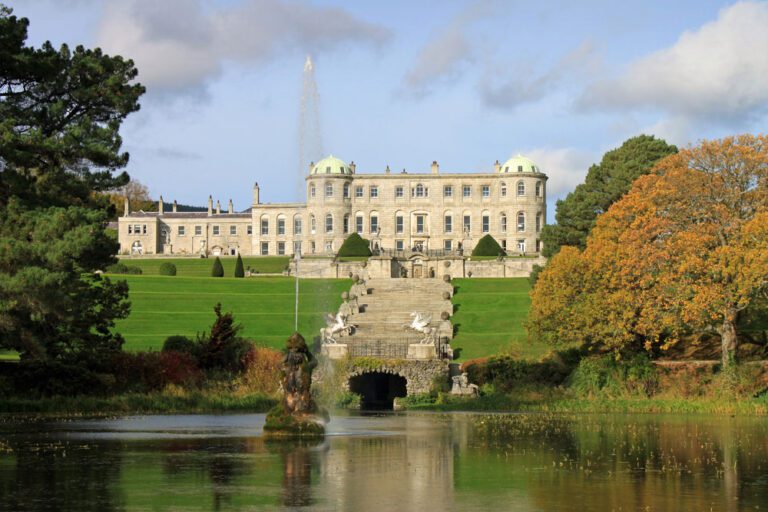History of the Titanic
The Titanic was a luxury passenger liner that was built in the early 20th century. Construction of the ship began in 1909 at the Harland and Wolff shipyard in Belfast, Northern Ireland. The ship was one of three in the Olympic class, which were designed to be the largest and most luxurious ships of their time.
The Titanic was launched on May 31, 1911, and her maiden voyage began on April 10, 1912. During its way from Southampton, England, to New York City, the Titanic carried over 2,200 passengers and staff members.
The Titanic collided with an iceberg in the North Atlantic Ocean during the night of April 14, 1912. Water began to fill the lower decks when the ship’s hull was pierced. Despite the crew’s efforts and the deployment of lifeboats, the Titanic sunk in the early hours of April 15, killing over 1,500 people.
The sinking of the Titanic had an impact all across the world. At the time, it was the greatest maritime tragedy in history, and it prompted serious concerns about the safety of ocean travel. The sinking also had a huge influence on the maritime industry, prompting the creation of new safety laws and technology to prevent future tragedies.
The Titanic was also a symbol of the era’s grandeur and excess. The ship included facilities including a swimming pool, a gym, and magnificent dining rooms, and its first-class suites were among the most luxurious of their day. The sinking of the Titanic served as a warning of the fragility of human life and the consequences of arrogance.
The passengers and crew of the Titanic came from a variety of backgrounds and experiences. Some of the wealthiest people in the world were among the first-class passengers, including businessmen, politicians, and celebrities. Second and third-class passengers were mostly immigrants looking for a better life in America. Members of the crew came from all over the world, including Ireland, England, and Norway.
For nearly a century, the stories of the Titanic’s passengers and crew have fascinated the globe. The Titanic’s legacy is one of human achievement and sorrow, from the courage of the musicians who performed as the ship sunk to the terrible stories of families divided by the accident.
The Titanic Exhibition in Belfast
The Titanic Belfast exhibition is a visually magnificent collection of interactive displays, cutting-edge technology, and meticulously curated relics that bring the Titanic’s narrative to life. The display is situated on the site where the Titanic was built and launched, making it an appropriate monument to the ship and the people who built and sailed aboard her.
Visitors to the museum may view a variety of exhibits, including reproductions of the ship’s cabins, where they can learn about the various classes of passengers and the facilities accessible to each. The cabins are furnished with period furnishings and décor, giving visitors a feel of what it was like to cruise aboard the Titanic during her peak.
The exhibition also includes a variety of interactive displays that allow visitors to learn more about the Titanic’s history and significance. The Shipyard Ride, for example, provides tourists on a virtual tour of the shipyard where the Titanic was built. Another attraction is the Ocean Exploration Center, where visitors may explore the ocean floor and learn about the underwater technology used to investigate the Titanic tragedy.
Throughout the show, guests may explore a large collection of Titanic-related items and memorabilia. Personal possessions of passengers and crew members, such as letters, postcards, and clothes, as well as ship parts, such as a lifeboat and a bit of the hull, are included. These relics create a strong link between the passengers who embarked aboard the Titanic and the awful events that occurred on that fateful night in April 1912.
The exhibition also incorporates a variety of technology and design components that contribute to a genuinely immersive experience. Visitors may, for example, stand on a model of the Titanic’s deck and experience the coolness of the night air as the ship falls beneath the seas. they may also examine a model of the ship’s bridge and learn about the communication systems utilized on board.
Ultimately, the Titanic Belfast display pays homage to the Titanic and the individuals whose lives were impacted by the ship’s terrible sinking. The exhibition presents a unique and fascinating perspective on one of history’s most renowned ships through interactive exhibits, breathtaking displays, and dramatic relics.
The Legacy of the Titanic
The Titanic’s sinking on April 15, 1912, was one of the worst maritime catastrophes in history. Despite its sad conclusion, the Titanic’s legacy lives on via its influence on technology, culture, and remembrance.
One of the Titanic’s most notable effects was its influence on marine safety rules. The ship’s sinking triggered a review of international safety laws, resulting in the development of new norms and standards for passenger ships. The Titanic catastrophe also emphasized the significance of adequate communication and navigation systems on board ships, prompting the development of new technology such as radio communication and radar.
In terms of cultural repercussions, the Titanic’s narrative has been immortalized in literature, cinema, and popular culture. James Cameron’s 1997 film “Titanic,” which won 11 Academy Awards and became one of the highest-grossing films of all time, is perhaps the most renowned fictional depiction of the Titanic. Many novels, plays, and films have been written on the Titanic, ranging from the personal experiences of passengers and crew members to the ship’s engineering and design.
The ongoing attempts to preserve the Titanic’s memory and remember the people lost in the disaster are also crucial aspects of its legacy. The Titanic’s wreck was discovered in 1985, and several trips have since been organized to examine and document the ship’s remnants. Moreover, memorials and monuments have been built across the world to honor the people lost on the Titanic, including the Titanic Belfast museum.
The Titanic’s legacy is diverse, covering its influence on technology, culture, and remembrance. Despite the tragedy of her sinking, the Titanic’s narrative continues to captivate people all around the world, and its legacy is certain to last for years to come.
Touring the Titanic Museum in Belfast
Titanic Belfast is a world-class museum in Belfast, Northern Ireland, commemorating the legacy of the Titanic, the famed passenger ship that perished on her maiden voyage in the North Atlantic Ocean in 1912. Here are some pointers and recommendations for visiting the exhibition:
- Best times to go: The exhibition is open year-round, but the best times to visit are during the off-peak season, from September to November and from February to April, to avoid the crowds. The exhibition is busiest during the summer months.
- How to get there: Titanic Belfast is located in the Titanic Quarter of Belfast, about 1.5 miles from the city center. It can be reached by car, bus, or train. There is also a hop-on-hop-off bus that stops at the exhibition.
- What to expect: The exhibition is a multi-sensory experience that takes visitors on a journey through the Titanic’s construction, launch, and tragic sinking. It includes interactive exhibits, full-scale reconstructions, and immersive audio-visual presentations.
- Highlights of a visit: The exhibition’s highlights include taking a tour of the Titanic’s slipways, which were used to launch the ship in 1911, and visiting the nearby SS Nomadic, the last remaining White Star Line vessel. Other highlights include exploring the Titanic Experience galleries, which feature original artifacts and personal stories of the passengers and crew.
- Additional tips: It is recommended to book your tickets in advance, as the exhibition can get busy, especially during peak season. The exhibition takes approximately two hours to explore, so plan your visit accordingly. There are also plenty of cafes and restaurants in the Titanic Quarter, so visitors can grab a bite to eat after their visit. Finally, visitors should wear comfortable shoes, as there is a lot of walking involved.
In conclusion, a trip to Titanic Belfast is a must for everyone interested in the ship’s history and legacy. Titanic Belfast is likely to create a lasting impact on visitors with its world-class exhibitions, interactive activities, and breathtaking architecture.

Here are some more famous tourist attractions in County Antrim:
- Giant’s Causeway: a UNESCO World Heritage Site and natural wonder with unique hexagonal rock formations
- Carrick-a-Rede Rope Bridge: a suspension bridge over a 100ft drop, connecting the mainland to a tiny island
- Dunluce Castle: a medieval castle on the edge of a cliff, offering stunning coastal views
- Bushmills Distillery: the oldest licensed whiskey distillery in the world, offering tours and tastings
- Dark Hedges: a picturesque avenue of beech trees featured in Game of Thrones
- Rathlin Island: a remote island with a population of just over 100 people, offering stunning scenery and wildlife
- Glens of Antrim: a scenic area of nine glens with waterfalls, forests, and traditional villages
- Antrim Coast Road: a scenic coastal drive with stunning views of the sea, cliffs, and countryside
- Glenariff Forest Park: a forest park with waterfalls, walking trails, and stunning views of the Glens of Antrim.
Helpful Resources:
Recommended Reading:




